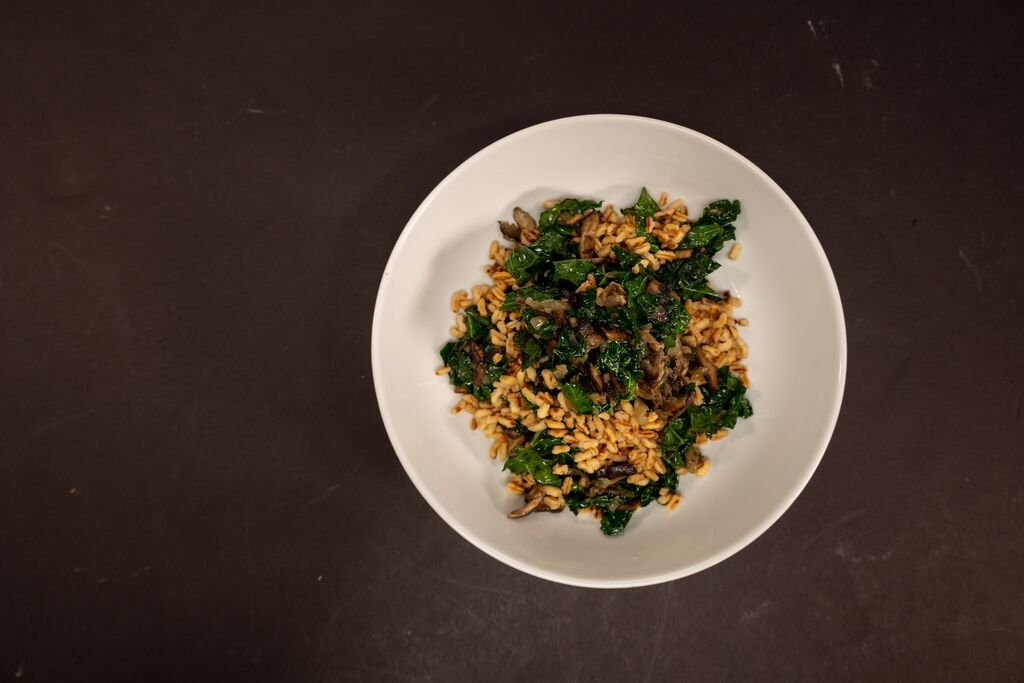5 Food Trends from 2022 That Are Here to Stay
5 Food Trends from 2022 That Are Here to Stay

One of the challenges and delights of working in the food world is staying on top of emerging food trends. While exploring new flavors and ingredients can be exciting, it can sometimes be difficult to nail down which trends markets and individual consumers will latch onto.
To help you out, we’ve compiled five 2022 food trends that are sure to stick around for years to come.
1. Plant-Based Eating Continues to Grow
As consumers look to limit their consumption of animal products, plant-based eating will likely only continue to grow. According to Bloomberg Intelligence, the global plant-based market is predicted to increase from $30 billion in 2021 to $160 billion by 2030.
Along with the growth of already established plant-based products, new meat alternatives will continue to appear on the market—companies are developing everything from plant-based sashimi to bean-based egg alternatives.
Not only do we expect the diversity and number of plant-based products to increase, but also the demand for creative and delicious plant-based dishes. This means chefs and food companies should work to increase their understanding of plant-based cuisine and culinary techniques.

One way culinary professionals can learn more about plant-based cooking is by attending plant-based culinary school. These programs can introduce students to topics including how to make plant-based milk and cheese, how to work around dietary restrictions, and how to incorporate global flavors into veg-forward dishes.
2. Global Cuisines Bring New Flavors to Barbecue
While smoked meats and barbecue have been popular in the United States for years, global cuisines add new flavors and elements to this food segment. As the COVID-19 pandemic continues to impact travel, consumers seek to experience new places through their food.
Korean barbecue not only brings new flavors, but it also introduces a whole new eating experience. Rather than being served already-cooked meat, diners are given raw meat which they can then cook themselves or hand over to a professional to prepare. Once the meat is cooked, diners get to combine flavors by adding in banchan, or side dishes like kimchi and marinated mushrooms. Data shows this cuisine is catching on, with the consumption of Korean barbecue growing at a rate of 5.49% per year.
International cuisines are also introducing new cuts of meat to the grilling and smoking scene. While hearty cuts like pork shoulder and chicken thighs will remain, diners may increasingly explore this cuisine with suckling pig and thin strips of tenderloin.
3. Adaptogens Appear in More Food Products
While herbal supplements have been around for years, 2022 may spark an increase in adding adaptogens–plants and mushrooms that help the body adapt and cope with stress–to food products and meals. Some popular adaptogens include ginseng, Ashwagandha, and turmeric, as well as functional mushrooms like cordyceps and Chaga.
Adaptogens are already popular in products including coffee substitutes, teas, and drink blends, but 2022 will likely see companies adding adaptogens to gummies, nutritional bars, and more.

4. Sustainable Food Production and Preparation Is Emphasized
Food producers large and small will continue to explore ways to implement more sustainable practices. This desire can drive everything from the reduction of waste in restaurant kitchens to the decrease in water consumption in food production facilities.
Consumers’ interest in sustainable food production methods may also lead to “regenerative” product labels. Food brands may also begin to explore labeling their products to highlight their low carbon footprint.

In restaurant kitchens, chefs can continue exploring how to implement sustainable practices, like working with local producers and reducing waste. This could also include becoming creative with using restaurant inventory as well as developing seasonal menus to highlight local ingredients.
Additionally, a survey conducted by the National Restaurant Association reported a larger focus on sustainable packaging in 2022. Rather than use disposable, fossil-fuel-based options like Styrofoam, restaurants might explore recyclable, compostable, or reusable options. Some brands will even begin experimenting with edible packaging.
5. Yuzu and Hibiscus Explode in Popularity
As far as individual ingredients go, the yuzu and hibiscus are likely to dominate 2022 and the years ahead.
Yuzu is a tart citrus fruit that has long been popular in East Asian cuisines. While it’s appeared in the United States in the past, it will likely begin to explode into the U.S. marketplace in 2022. Yuzu juice may appear in beverages including cocktails and seltzers, and chefs can also experiment with adding it to marinades and broths.
The hibiscus flower provides a bright pink color and a high dose of vitamin C that has made it popular in teas. However, we expect producers to begin adding hibiscus to yogurt, jams, kombucha, and more.
Stay on Top of Trends with Culinary Culture
Whether you’re designing a new menu for a restaurant or rolling out a new line of food products, it helps to stay on top of emerging food trends. Culinary Culture leverages food trend data to help businesses develop new products and dishes that keep customers coming back for more.
If you’re interested in learning more about 2022 food trends and how to incorporate them, contact Culinary Culture today.